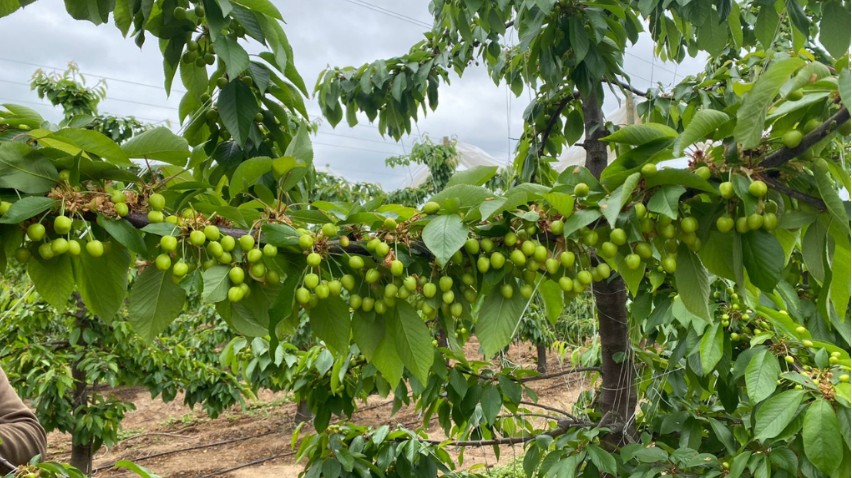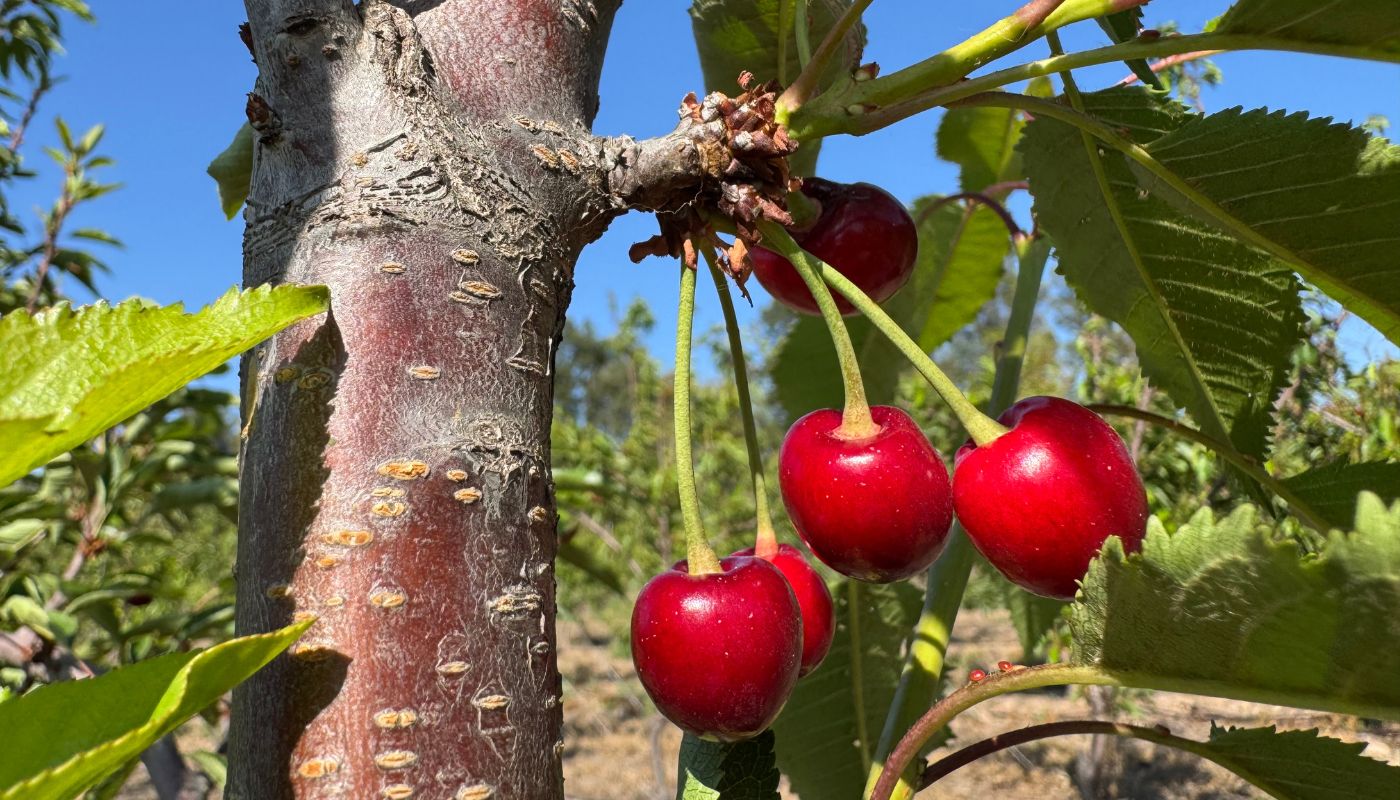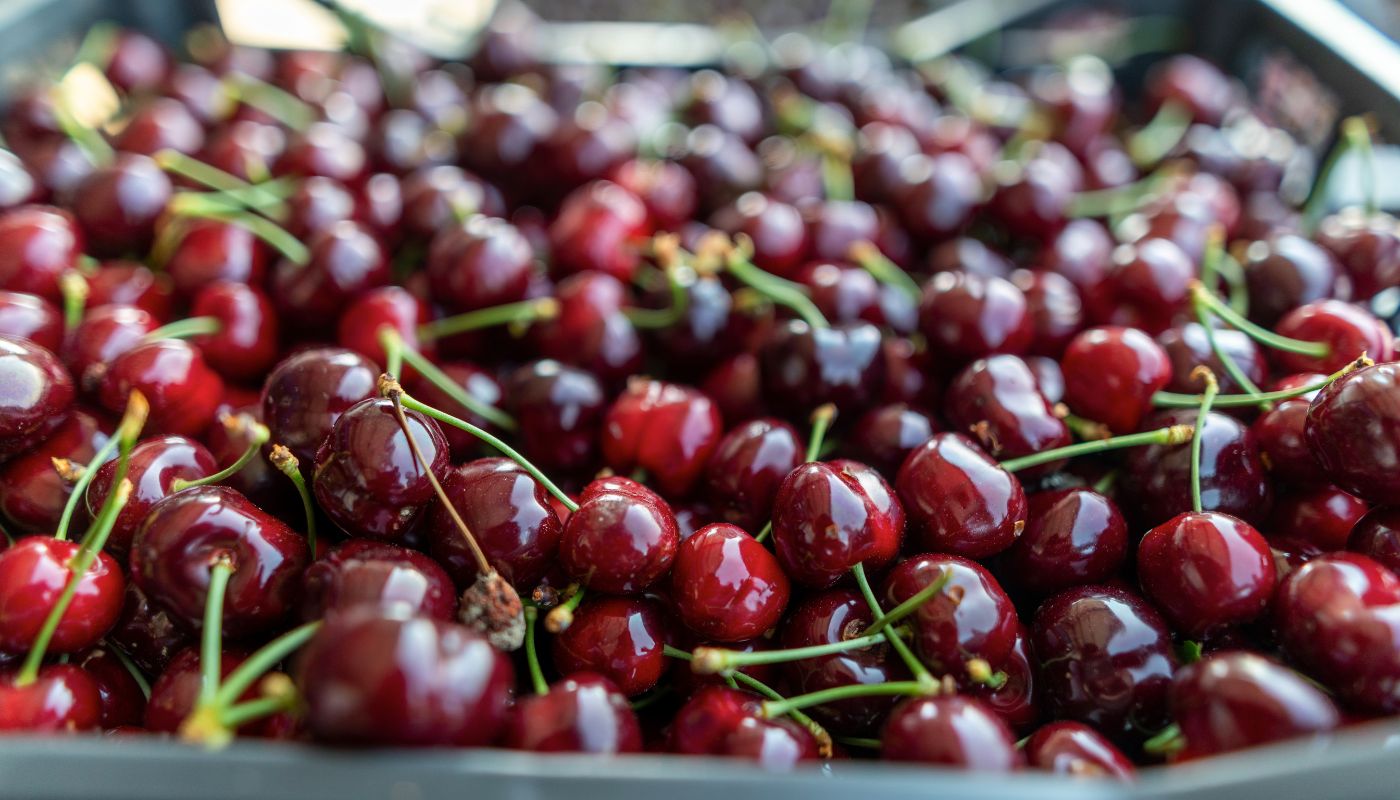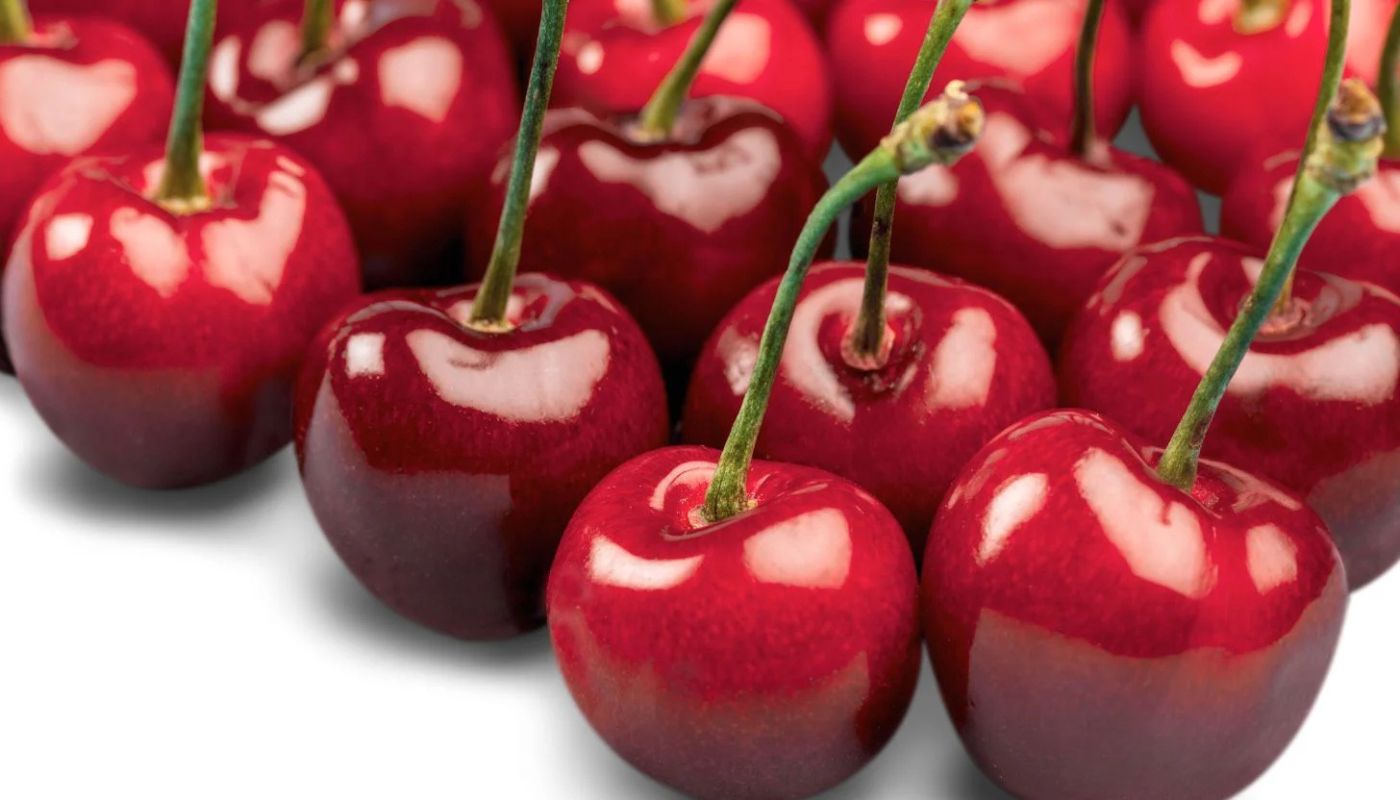Load regulation is one of the most decisive practices in cherry production management, as it directly impacts fruit quality and tree balance.
The timing of load regulation is crucial for achieving effective results in cherry management. Various field experiences and studies agree that thinning should be completed within 30 days after full bloom (DDFB). During this period, cell division concludes, and any delay diminishes the potential for improving size, firmness, and postharvest life.
Among the various practices aimed at improving cherry size and quality, early fruit thinning has established itself as one of the most widely recommended and used techniques for deciduous fruit species. Rather than a method strictly aimed at increasing the productive potential of orchards, its application is primarily aimed at balancing the vegetative-productive ratio, improving harvest uniformity, and reducing the incidence of associated problems.
Why thin cherry trees?
Thinning consists of manually, mechanically, or chemically removing part of the set fruit. The objective is simple: reduce competition for resources such as light, water, and nutrients, so that the remaining fruit achieves larger size, better color, greater firmness, and a higher sugar content.
Cherry trees, unlike other fruit trees, are very sensitive to overload. Excessive fruit can result in:
– Small-sized fruit.
– Reduced firmness and post-harvest life.
– Lower soluble solids index (°Brix).
– Higher incidence of splitting or cracking.
Consequently, well-planned thinning not only improves fruit condition but also translates into a commercial advantage: larger sizes and better acceptance in demanding markets such as Asia, the United States, and Europe.
Regulation Strategies
Currently, for the productive management of cherry orchards, there are four main strategies for regulating fruit load:
- Pruning
- Bud thinning
- Flower thinning
- Fruit thinning
All of these strategies determine the tree’s productive potential. The earlier fruit load is regulated, the better the quality and condition of the fruit will be at harvest.
Fruit thinning should be done before the onset of pit hardening, which allows for fruit set. This process occurs approximately 20 to 25 days after full bloom (DDFB).
For this tool to be effective, it must be completed no later than 30 days after full bloom, when the process of cell division in the fruit physiologically concludes.
It’s important to note that there’s no exact calculation for determining the percentage of fruit to remove, as the decision to thin is subjective. Although it can be done up to 30 days after the DDPF, the first 15 days don’t allow for a clear assessment of fruit set.
Evaluations can begin at 15 or 20 days after the DDPF, leaving only about 10 days for early thinning, a very tight time window.
This process is further complicated by its high labor demand. Flower and fruit thinning can require 70 to 80 man-days (MWD) per hectare, depending on the orchard type, while bud thinning requires 40 to 50 MWD per hectare.
What if we’re late?
Although the window for fruit thinning is very tight, even late thinning provides benefits. The optimal leaf-to-fruit ratio (between 3 and 5 leaves per fruit, approximately 200 cm² of leaf surface per fruit) is crucial for size and final quality. Reducing leaf overgrowth improves nutrient and sugar distribution, increasing quality parameters such as Brix and dry matter, although the effect on final size is less significant.
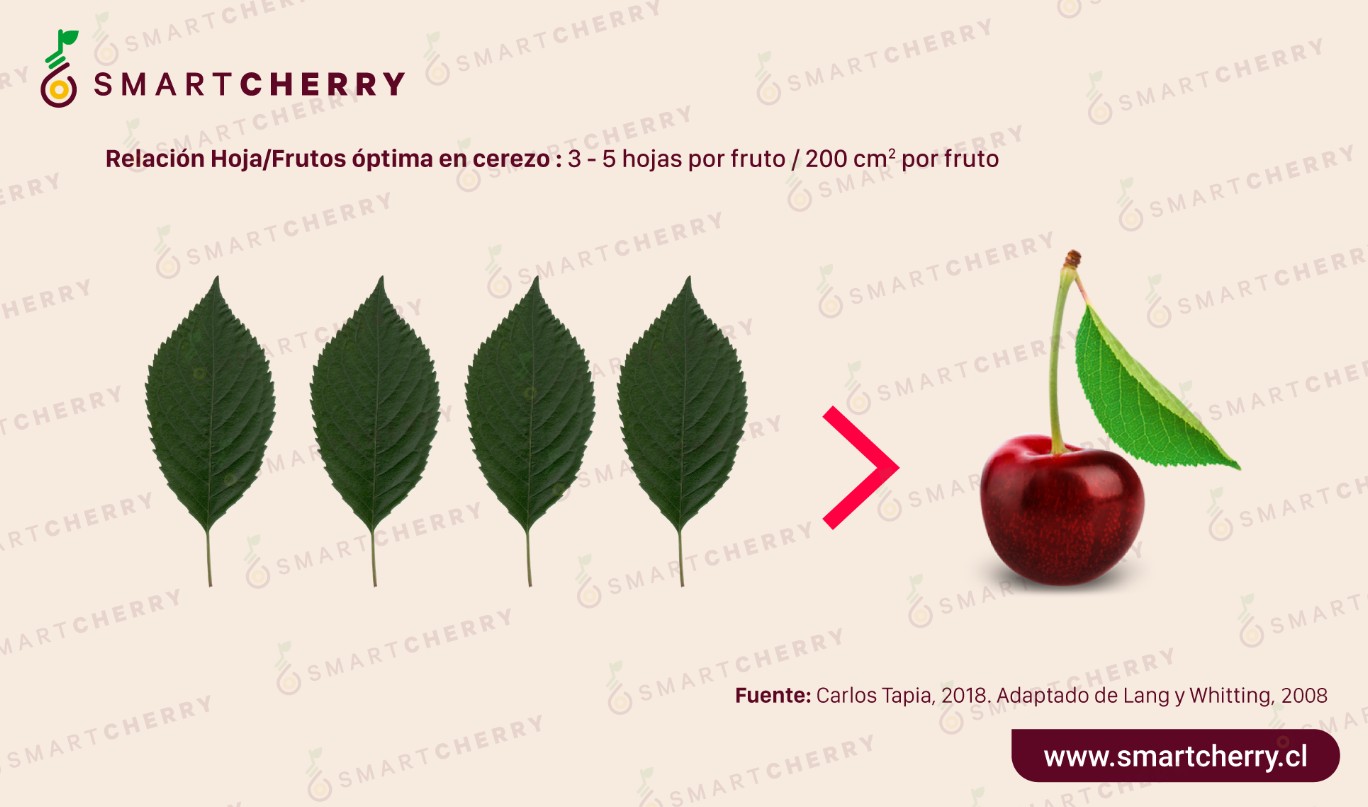
Evidence
Trials conducted in Argentina (Raffo and Ballivian, 2005) with the Lapins and Sweetheart varieties showed that early thinning significantly increased the percentage of fruit in the Jumbo (26.1–28 mm) and Premium (28.1–30 mm) categories. In the thinned trees, 74% of the fruit reached these sizes, compared to only 36% in the unthinned ones.
The study concluded that 94% of the thinned Lapins fruit was of exportable size (greater than 24 mm), compared to 76% in the control. For Sweetheart, the proportions were 91% in the thinning treatment and 84% in the control.
Similar results have been reported in Chile, where thinning before 30 days have shown positive effects on size and quality parameters, while late thinning, although less effective, also helps compensate for overstocking.
Looking Ahead
Fruit thinning is a fundamental tool for achieving quality fruit and ensuring competitiveness in international markets.
Although early thinning is a key tool for improving production potential, factors such as uncertainty in fruit set and adverse weather conditions, such as late frosts, make it advisable to adopt a progressive thinning system—a system that combines pruning, bud counting and analysis, flower thinning, and, finally, fruit thinning.
It is important to consider the growing labor shortage, which underscores the need for mechanical and chemical methods to complement manual thinning. Although chemical thinning is still under development, it represents a promising solution for reducing labor demand.
References:
– Von Bennewitz E. et al., 2011. “Effects on fruit production and quality of different dormant pruning intensities in ‘Bing’/‘Gisela.6’ sweet cherries (Prunus avium) in Central Chile.” Cien. Inv. Agr. 38(3):339-344. 2011.
– Kulzcewski and Tapia, 2020. “Crop load regulation in cherry orchards: A current perspective based on past research.” SmartCherry.
– Raffo and Ballivian, 2005. “Crop load regulation in cherry orchards: A practice that allows for the regulation of export volumes.” Journal of Fruit Growing & Diversification No. 48.
– Whitting M., 2019. “Managing sweet cherry crop load.” WSU, USA.
